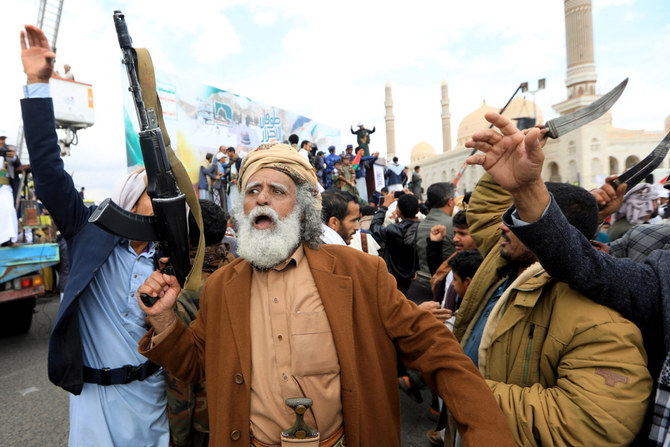GENEVA: Since Sudan’s army retook Khartoum last month, Red Crescent volunteers have been working to collect and clear the bodies littering the streets of the war-ravaged capital.
Aida El Sayed, head of the Sudan Red Crescent, told AFP the organization’s volunteers were finding bodies “in the street, inside the buildings, everywhere.”
She said it remained unclear how many bodies are still lying out in the open in Khartoum.
But during just one day, she said Red Crescent volunteers had found “250 in one street.”
Since April 2023, the conflict has pitted army chief Abdel Fattah Al-Burhan against his former deputy Mohamed Hamdan Dagalo, who heads the paramilitary Rapid Support Forces.
The war, which entered its third year on Tuesday, has killed tens of thousands, uprooted 13 million and created what the United Nations describes as the world’s largest hunger and displacement crises.
In Khartoum alone, more than 61,000 people have died of various causes during the first 14 months of war, according to the London School of Hygiene and Tropical Medicine — a 50 percent increase in the pre-war death rate.
Of those deaths, 26,000 were attributed directly to violence, the report found last year.
Until the army reseized control of the capital “nobody could enter Khartoum,” Sayed said.
Consequently, some of the bodies being found have been there “since the beginning of the war,” she said.
“Sometimes we are collecting bones.”
The Sudan Red Crescent counts some 12,000 volunteers in the country, providing assistance to the millions of displaced people, handing out food and water, and offering psychological support.
The Sudan Red Crescent is meanwhile struggling to keep up with the towering needs in the country amid a dire lack of funding.
“Sudan is a neglected, forgotten war,” said Sayed.
Only highly-trained teams handle the organization’s “dead body management” program, decked out in special protective gear as they gather up remains in plastic bags before transporting them to a designated safe area, Sayed said.
The main challenge is identifying the bodies.
Those found with ID cards are carefully registered and buried in a designated area, easy to find and visit.
The others are registered with all the known details and taken to another area, where family members searching for missing relatives can come and make inquiries.
The International Committee of the Red Cross said this week that at least 8,000 people were reported missing across Sudan last year alone, warning this was just “the tip of the iceberg.”
The Red Crescent volunteers are helping in the painstaking work to track down the missing, Sayed said, adding that this was “a very big problem” in Sudan.
“You get the call in the middle of the night: I cannot find my daughter, my husband, my brother... We always hear from people asking about their family members or neighbors.”
In addition to tracking missing people and clearing bodies from Kartoum’s streets, the volunteers are taking part in a “cleaning campaign,” in a bid to make it safe for the many displaced people now eager to return home.
The United Nations said this week that it expected more than two million people to return to the capital within the next six months.
Asked if it was safe for them to return, Sayed acknowledged that “there are no guarantees of that,” but stressed that people were “really tired” and just wanted to see their homes.
She herself is from Khartoum. So far, she has only seen a picture of the house she grew up in and started her own family in.
“It has completely collapsed, and bombed in some areas.”
“It is hard.”
Even as the Sudan Red Crescent strives to support communities across the war-ravaged country, its workers are facing the same dangers and the communities they serve.
The organization has lost 28 staff members and volunteers in the war, Sayed said.
“In Sudan, everyone is a target.”























